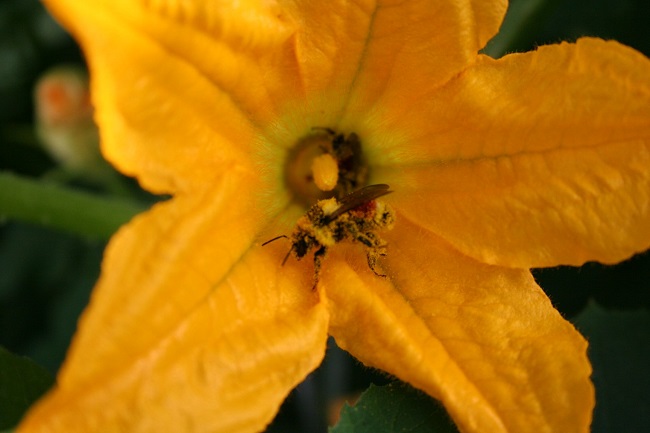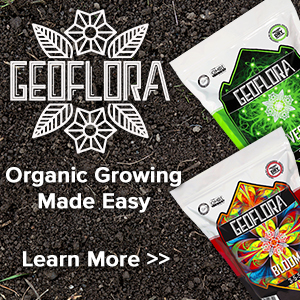
Pollination is necessary in most cases where the gardener is interested in consuming the fruit or seed of their vegetables; think tomatoes, squash, and corn. Getting things pollinated can be a problem for indoor gardeners because our plants are indoors and not outside where natural pollination can take place. It is a common concern for beginners with a greenhouse, but it doesn’t need to be such a big concern.
Let’s take a general look at what pollination is and how we might handle such a requirement with our indoor gardening.
What is Pollination?
Pollination is part of the reproductive cycle of plants. It involves transferring pollen from male parts of flowers to female parts of flowers to fertilize the plant. Fertilization is essential so the plant can produce seed.
Some plants are self-fertile, so they don’t need pollen from another plant. Their blossoms can fertilize themselves (within the same flower or from another flower on the same plant). Other plants require cross-pollination where pollen from another similar plant is used to fertilize the flower.
Vegetables like carrots, beets and broccoli are productive in the absence of pollination, because their seed is produced after it provides its food source to us. Vegetables that bear fruit, like tomatoes, peppers, eggplant, and squash require pollination for the fruit to set, so it’s essential that pollination takes place.
How are Plants Pollinated?
There are four basic ways that pollination takes place: animal contact; wind; self-pollination, and human assisted pollination. Here are some examples of each type of pollinator at work. The overwhelming majority of plant pollination is performed by animals as they go about searching for food. Animal pollinators include birds, flies, moths, butterflies, and most importantly, bees. The best pollinators out there are the humble and hard-working bumble bees and honeybees. While these animals search for sweet nectar, they help pollinate our vegetable gardens. In our greenhouses, bumble bees can become completely covered in pollen while visiting squash blossoms.
Wind is another good pollinator. Corn is probably the best example to illustrate how wind pollination works. Pollen is blown by the wind from the tassels on top of the corn plant to the corn silk that hangs out of the end of each ear of corn. That’s why corn is best planted in multiple adjacent rows instead of single rows – it assists in pollination.
Many types of plants are self-pollinating. Some plants pollinate themselves by having the male portion of the blossom grow into contact with the female portion. This can happen even when the blossom is closed. A good example is the tomato plant; many of these pollinate themselves, even when their blossoms don’t open.
When growing plants indoors, the chance of pollination by animals and wind is reduced, so that’s where we humans must get involved to make certain our plants are pollinated. Sometimes it requires a small paint brush, and sometimes we just need to shake the plant a bit or create air circulation to promote pollination.
Pollinating Indoor Vegetables
There are several methods for making certain your indoor vegetables are well pollinated. The easiest approach to indoor pollination is to provide an opening for insects to enter. Bees will naturally find their way into your greenhouse or other indoor growing area if you give them an opportunity. An open vent or an open door is all they need if they are plentiful outdoors.
Tomatoes are mostly self-fertile, yet some have blossoms that don’t open, so they can’t be pollinated by bees or other insects, and indoors the wind can’t get to them. To ensure adequate pollination, just shake the plant lightly every few days after blossoms appear. This will help dislodge pollen inside the blossoms for fertilization that will set fruit.
Squash plants have both male and female flowers. The male flowers are the first to appear and each last only a couple of days. A week or so later you’ll see the female blossoms appear. They have a tiny fruit on the bottom of the blossom. As soon as the blossom opens, use a small watercolor paint brush and act as the pollinator in the absence of bees. Gently swirl it inside of a male flower to pick up pollen, and then brush it lightly inside the center of the female blossoms.
An Alternative to Pollination
Wouldn’t it be great if you didn’t have to be concerned about pollinating your indoor vegetables? Well, you don’t have to if you grow cucumbers especially bred for use in a greenhouse. They’re known as European greenhouse varieties. They produce nearly all female blossoms, require no pollination, and produce an abundance of seedless cucumbers.
So, there you have it, the basics of pollination for fruit set and seed development. Even indoors, nature can accomplish this task, but sometimes it needs a little help. To be on the safe side, I always help along my vegetable plants until I see that bees have found their way into the greenhouse to pollinate the plants.
Clair Schwan is an avid vegetable gardener who considers his gardens to be important assets. To him, vegetables in the garden are a bit like money in the bank.
Related Articles & Free Email Newsletter
Greenhouse Gardening – Should I Take the Plunge?
Support Native Bees and Enjoy the Many Benefits
Understanding the 5 Basic Greenhouse Designs & Materials They Use




Comment here